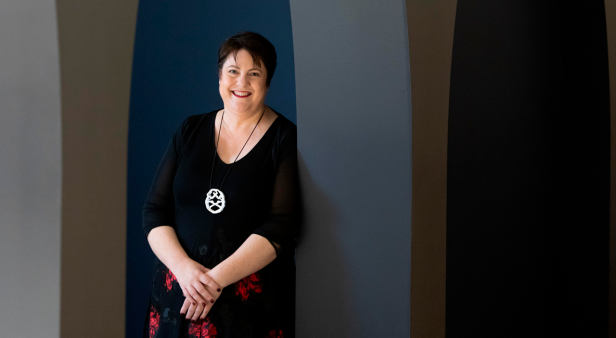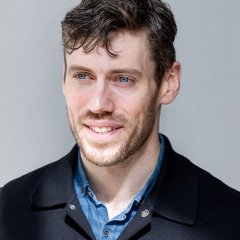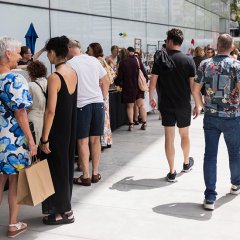To start, we’d love to know where the idea of looking at folk stories through a contemporary artistic lens first came from. What makes these timeworn narratives an interesting area for exploration?
For centuries, fairy tales have offered ways to discuss the world around us through the safe realm of fiction. Because they are not bound by borders, social class, custom, religion, age, or time, they are able to shift and change to meet the needs of the community. By using metaphors, they offer us ways to process complex ideas such as power and injustice, adolescence and ageing, intergenerational and familial tension, and gender and otherness – all topics that are as relevant today as they’ve ever been. They’re also entertaining! They often have a satisfying conclusion that elevate the good and punish the wicked.
Fairy Tales features a broad array of works – were there any intrinsic qualities you looked for in the artworks when starting the curatorial process?
One of the fascinating questions throughout the exhibition’s development is why do we continue to retell fairy tales? Jack Zipes, a fairy tale theorist, and an author for our publication, has an interesting idea that fairy tales are like a meme. They are shared widely in the community because they offer us a shorthand for situations and ideas. If you think of a fairy tale apple, mirror, or witch house, for example, we all have an idea of what tales they are telling and the ideas that underpin them. I was particularly interested in how artists, designers and filmmakers used these components to invoke stories we recognised before reshaping them in new and interesting ways.
In addition to works from notable artists, Fairy Tales also features original papercuts by Hans Christian Andersen and costumes and props from movies like Jim Henson’s Labyrinth. What was the driving force behind ensuring that items from the worlds of literature and cinema were also prominent in the exhibition?
Fairy tales began as oral tales and then moved into print by the seventeenth century. Both are equally valid ways to tell fairy tales and continue to be part of our lives today. Film and screen culture is another major way we relate to fairy tales, perhaps the most dominant across the world. With a new medium comes new ways to explore and express fairy tales, and it felt important to bring all these elements together to show how prevalent they are in our daily lives, particularly as we are also able to showcase the films across the Gallery’s exhibition spaces through props, costumes, and clips and in the cinema during the season.
Fairy Tales showcases works in a variety of mediums, from sculpture and painting to augmented reality. Are there any works that you think put these mediums to particularly innovative use in the exhibition?
I find the way artists approach making new work interesting and particularly the way they decide which artform will work best for each new piece. Tracey Moffatt’s stunning photography series ‘Invocations 2000’ and Trulee Hall’s large sculptural work ‘Witch’s House (Umbilical Coven) 2023′ are good examples of this. Both artists work across multiple disciplines, including filmmaking, but have chosen photography and sculpture respectively to create the works in this exhibition. There is magic and a creative alchemy to this process. Regarding technology, Walter Martin and Paloma Muñoz’ augmented reality works are also magical, the use of a mobile devise as a magic wand to conjure a work that is both there, and not there, is playful and brings a lovely sense of wonder to the exhibition.
Fairy Tales is divided into three chapters, ‘Into the Woods’, ‘Through the Looking Glass’ and ‘Ever After’ – can you give any hints as to what ideas each chapter examines?
The exhibition unfolds across three themed chapters. ‘Into the Woods’ explores the conventions and characters of traditional fairy tales such as Little Red Riding Hood, Snow White, Cinderella, Beauty and the Beast, alongside artists contemporary retellings of similar themes. ‘Through the Looking Glass’ presents newer tales of parallel worlds that are filled with unexpected ideas and paths, and it brings to life the tales of Alice in Wonderland, The Wizard of Oz, Where the Wild Things Are and The Labyrinth. The final chapter in the exhibition, ‘Ever After’ brings together classic and current tales to celebrate aspirations, challenge convention and forge new directions, as well as offering a celebration of love in its many forms as depicted in fairy tales.
QAGOMA’s Australian Cinémathèque is also hosting an accompanying film program, ‘Fairy Tales: Truth, Power and Enchantment’. Can you shed any light as to how this cinematic program expands upon the core themes explored in the exhibition?
The film program was curated by my colleague Sophie Hopmeier, assistant curator of the Australian Cinémathèque. Her program reflects the themes explored in the exhibition, looking at how these ideas play out in different ways across the world from classic retellings to contemporary reimagining’s in ways you might not first recognise. David Lynch’s beloved film Wild at Heart reflects elements of the Wizard of Oz, for example. Once you start to see fairy tales, you realise they are deeply embedded in many of our narratives. The film program also showcases beloved stories alongside films which feature the props and costumes on show in the exhibition. Of note, are the live music and film event screenings, which bring together silent cinema and a newly created musical score performed live. There are three special event screenings, the stunning papercut animated feature The Adventures of Prince Achmed by Lotte Reininger shouldn’t be missed!
Finally, we’d love to know if you have a favourite fairy tale and, if so, what do you love most about it?
There are so many beautiful fairy tales across the world, it’s hard to pick! One story I’ve been thinking a lot about lately is Little Red Riding Hood, and particularly its ongoing relevance today. As we know it’s a story of a young girl sent by her mother to her grandmother’s house in the woods, and she is waylaid by the wolf who preys on her good qualities – kindness, courtesy, politeness – for his own gains. I love the feminist retellings which have Red Riding finding her own solutions and vanquishing the wolf, as well as those that challenge the idea women need to be polite and accommodating to strangers. The question at the core of this story which is still so important – is how do you spot a wolf in sheep’s clothing? The story is a reminder that we may change eras and societies, but there is always going to be a wolf in some form or another that we need to identify and guard against.
Fairy Tales will run at QAGOMA from Saturday December 2 to Sunday April 28. Head to the QAGOMA website for a full look at the exhibition program.


